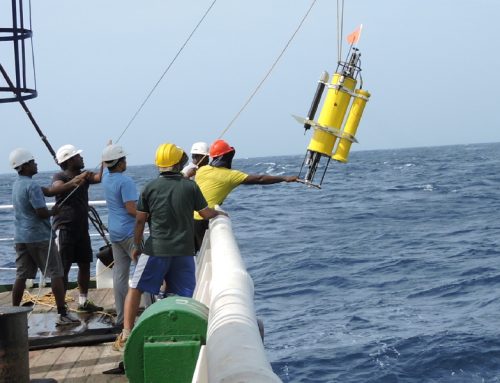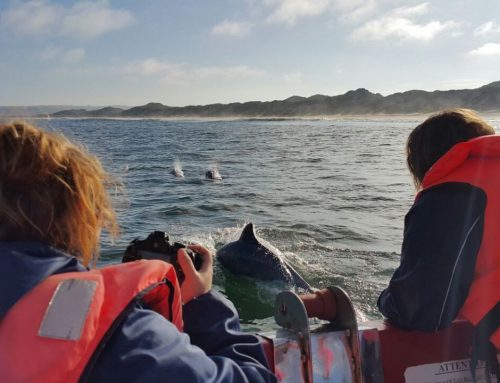SHOULD MEAT BE ON THE MENU?
In an interview by Heather Dugmore Australian agricultural journalist David Mason-Jones addresses what every farmer and environmentalist needs to know about livestock and global warming in his recently published book ‘Should meat be on the menu?’
The cattle industry in South Africa and many other parts of the world is under severe and sustained attack over the issue of global warming. This attack is broad-ranging and reaches all the way from United Nations to activist community groups concerned about global warming gases.
The vilification of cattle in the public arena is so effective that one cattle farmer recently told me that his children had come home from university and asked, “How can you live with yourselves, Mom and Dad, for owning all these cattle and causing so much global warming?’
Cattle owners now need to address, in the public forum, the widespread misconceptions about cattle and carbon emissions. Not only this, but they need to communicate the positive messages – such as the role that free-ranging cattle play in storing carbon.
The first misconception is the idea that cattle are just standing there in the middle of the landscape breathing out, and belching, vast quantities of ‘new carbon’ in the form of carbon dioxide and methane. The anti-cattle lobbyists argue that this ‘new carbon’ is the basis of harmful carbon emissions or carbon pollution. But how can this be so when every atom of carbon ever emitted by a farm animal – either as carbon dioxide or methane – comes from the atmosphere in the first place?
Think back to basic school biology and science and you will quickly understand this and spot the flaw in the ‘new carbon’ pollution argument. Photosynthesis in plants draws down carbon dioxide from the air and converts it to carbon in plants. In other words, the carbon has gone from a gaseous state in the atmosphere to a solid state in the plant. In turn, cattle eat the plants (grasses and other species) and the carbon becomes incorporated in the living processes of the animal. Some of the carbon atoms are incorporated into the physical structure of the animal – about 18% of the dry weight of all mammals is carbon.
The critical fact is that this kind of carbon originates from the atmosphere, not from the ground. And when a cow (or sheep or goat) belches, the result is simply a return of carbon to the atmosphere. It is an ever repeating closed loop with no net gain of carbon.
It is a natural, organic cycle, powered by solar energy, in which the cattle and other livestock are natural organic components.
So why is there all this fuss about cattle? Because those calling for a reduction in meat-eating in order to save the planet from global warming gases are ignoring the basic facts about the natural carbon cycle and confusing it with fossil fuel power stations.
Power stations get their carbon from beneath the ground (from fossil fuels such as coal, natural gas and oil), burn it and create what is effectively new carbon dioxide in the atmosphere, generated by human activity.
You can certainly therefore stand at the top of a power station chimney stack and argue that the carbon dioxide coming from the stack is warming the planet. You cannot, however, stand in the veld where cattle or sheep are grazing and have the same argument.
People who want meat eating curtailed are getting power stations and livestock mixed up. They are only calculating the output side of animals and ignoring the input side. This is appalling carbon accounting.
A further difference is that the power station can never re-use its own waste carbon dioxide. A sheep or cow can. The next mouthful of grass represents a new drawdown of carbon dioxide from the atmosphere. Far from being part of the carbon emission problem, free-ranging cattle are part of the solution. The grazing relationship between plants and free-ranging animals is one of the very few ways to draw down excess carbon dioxide from the atmosphere and store it as carbon in the soil.
Feedlot animals are in a different category because of the added carbon footprint of the fossil fuel used in tilling, seeding and harvesting grain. There is also a fossil fuel component in the production and distribution of fertiliser for grain growing. Finally, there is a fossil fuel component in transporting the grain to the feedlot.
We now move onto the methane debate – another grand myth perpetuated where cows are falsely targeted as the culprits of mass, polluting methane production. Here we need to understand the functioning of the cow’s rumen – a place where enteric fermentation takes place in the absence of oxygen – and where the carbon atoms cannot be chemically changed directly to carbon dioxide molecules because they need oxygen to do this. Instead the carbon atoms are combined with hydrogen atoms to form a methane molecule. This methane is then belched out by the cow. This methane molecule does not, however, have a long life in the atmosphere because two processes happen:
The first is that it reacts with the oxygen in the atmosphere. This changes its structure so that the methane molecule disappears completely and is replaced by carbon dioxide and water. In other words the carbon atom in the methane molecule reverts to exactly the same form as it was before the process of photosynthesis began.
The formula for this is: CH4 + 2O2 = CO2 + 2H2O + energy released
The second process that happens is that the methane is consumed as a food source by microbes living in the soil. Scientific research is only starting to come to terms with just how effective microbes in the general environment are in oxidizing methane.
Yet we are warned about the dangers of methane production by cows, as if it is something bizarre and unusual. Methane production by animals is a completely natural and organic process, powered ultimately by solar energy. Methane production by fossil fuels is an altogether different process, completely unrelated to cows.
The fact that a severe attack has been made on livestock farmers based on misleading information and poorly understood science is appalling.
The really important message to communicate with the public is not just the fact that free-ranging cattle are carbon neutral but also that they serve as agents to draw down excess carbon dioxide. In this regard cattle farmers now have a major high profile scientist on their side. This is Professor Tim Flannery from Macquarie University, a former Australian of the Year.
Tim Flannery recently spoke at a seminar in Australia titled, ‘Can red meat be green?’ Experts debate sustainable food production’. During his talk he emphasised that by using the relationship between plants and animals we can boost the carbon storage capacity of our soil. It is so important for all livestock farmers to get the message out because the food security of the world, environmental sustainability and livelihoods are at stake.
To contact David Mason-Jones or buy his book
Tel: +61 (0) 411 172 328
Email: david@journalist.com.au
Website: www.journalist.com.au




